by
Caroline Zook
In this article, we’re going to go in-depth on these five important aspects of online business. There are certainly many more we could cover, but these five are the critical foundation pieces you need to have in place:
Getting clear on the FOUNDATION of your business
Fortifying the product or OFFERING you sell
Building an ongoing PROMOTION plan to get customers
Creating content and growing your AUDIENCE
Evaluating the effectiveness of your WEBSITE
Great! Those are the five things we’re going to cover. However, before we move forward, this article comes with a B.F.C. (Big Fat Caveat)…
👋 Creating a successful online business doesn’t happen overnight after reading one article. You have to be willing to experiment, go through trial and error, and know that it takes time for your efforts to pay off.
(Anyone who is telling you they can help you “make 6-figs in your business in the next 14 days” is simply trying to sell you a load of hot-trash. Probably pricey hot-trash. Don’t buy expensive hot-trash, okay?)
Our goal with this article is to help you feel empowered with your business. We want you to feel less confusion and more clarity around exactly what you do, who you do it for, how you make money, and how you continue to grow a thriving business you enjoy.

Step #1: Getting Clear on Your Foundation
We’ve all been guilty of starting a business and diving straight into the deep end. We have a good idea, see a need in the market, or just want to dabble in a side project. Before we know it, we have a domain, a website, a logo, a product or service, a paying customer or two, and then we feel overwhelmed by our daily to-dos.
Most online business owners (us included) rarely take the time to create a SOLID business foundation. We’re going to help you do that here in Step #1 with an exercise we like to call the 4Q’s Foundation of Online Business.
The 4Q’s Foundation of Online Business
Question 1: WHO does your business help?
Define your specific customer type. A targeted audience helps attract ideal customers.
Action Step: Write a business tagline: "I help [specific customer type] [product/service] that get them [benefit]."
Question 2: WHY does your business exist?
Craft a mission statement that explains the deeper reason for your business.
Action Step: Write your mission statement: "My mission is to help [specific customer type] [outcome] because [personal motivation]."
Question 3: WHAT benefit does your business provide?
Clearly articulate the outcomes your customers can expect.
Action Step: Write a benefit statement: "By [specific thing you do], I help [specific customer type] get [outcomes]."
Question 4: HOW does your business provide the benefit?
Describe your offerings concisely.
Action Step: Detail your offerings in a clear, concise manner.

Step #2: Fortify Your Product or Service Offering
Next, we’re going to talk about your product or service offering. We like to refer to that thing you’re trying to sell as your “castle.” Think of your castle existing on an island floating out in the middle of the ocean.

Your job is to get people over on the “mainland” to know your castle exists and show them how to find your castle (and pay you!).

Before you try to get people to buy from you, you need to ask yourself: is your “castle” solid?
Ensure Your "Castle" Is Solid
You already defined what your offering is in the final Q of Step #1, so that should be clear as day. These next questions are really important to answer before you pour more effort into marketing and promoting what you sell:
Is your sales page clear and easy to read?
Are your buying options (tiers or various products) overwhelming?
Can YOU easily find the buy/pay button without much effort and complete the purchase process seamlessly?
Too often business owners create a services page or a sales page and because they’ve spent so much time working on it they don’t see the glaring issues with it. Once YOU feel your castle is in tip-top shape, it’s time to get a second opinion.
Sales Page Formula: P.O.P.S.E.P.
Great, you understand the basic concept of attracting potential customers to your offer. Now, when they land on your website and have an opportunity to buy from you, is your sales page optimized for converting someone to a buyer?
The simple formula we use to build sales pages is the following:
P: Problem – Identify your customer’s problem.
O: Outcome – Describe the desired outcome.
P: Product – Explain how your product solves the problem.
S: Social Proof – Add testimonials.
E: Examples – Show your work.
P: Purchase – Make buying seamless.
Go through your existing sales page and see if it passes the P.O.P.S.E.P. formula! If your sales page is missing any of those sections, it's time to add them!
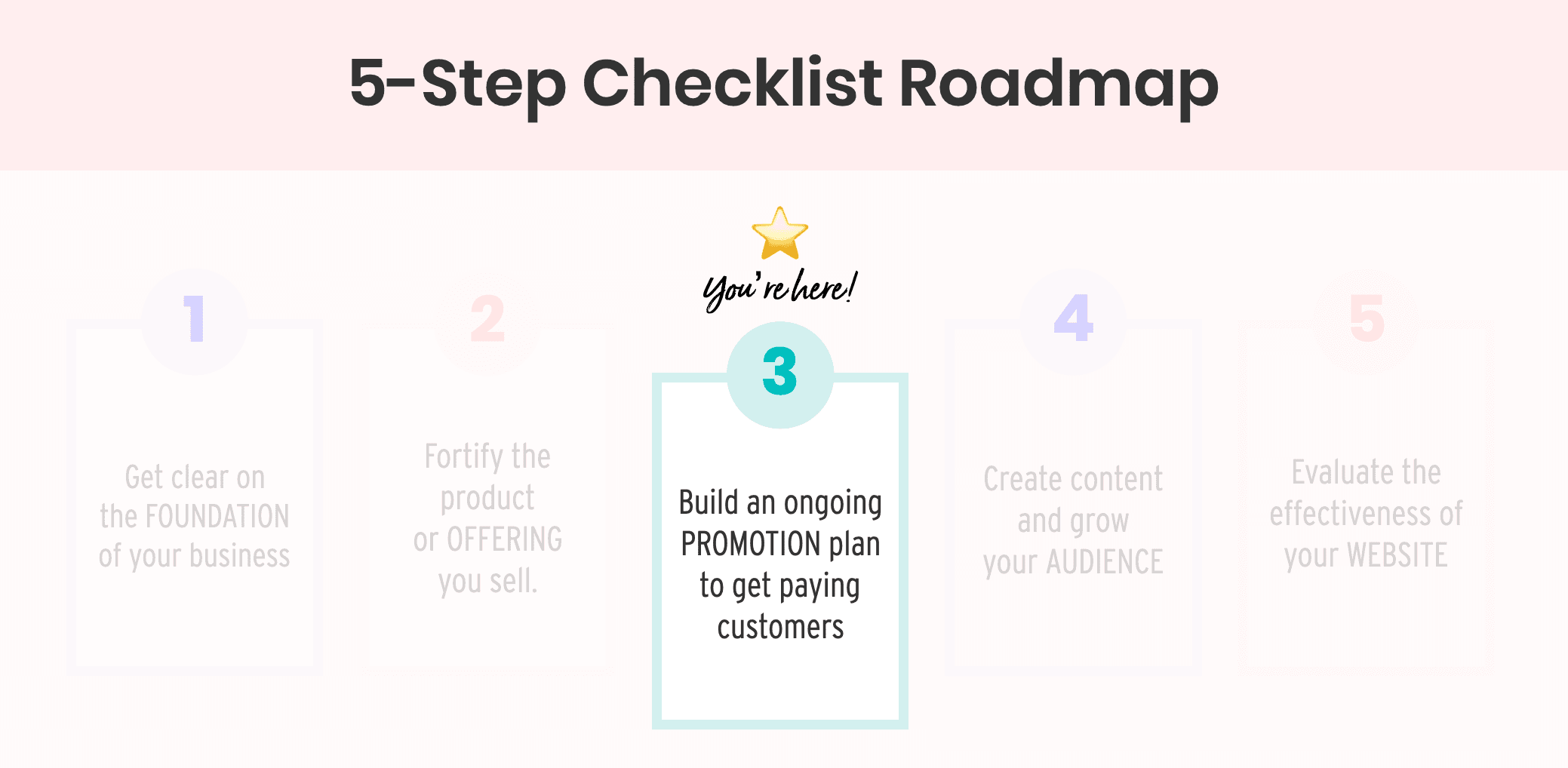
Step #3: Your Online Business Needs Promotion
The foundation is set and your offering castle is now strong and just waiting for customers. But, how do they get to your castle? How does someone find out about your offer?
When it comes to promoting your online business, the strategy we often refer to is called a “marketing bridge.” A marketing bridge is what takes someone from a stranger to your business to a paying customer.

It’s the journey they go on from discovering you exist to then paying you money. You have to methodically build your biri lead someone down the path to your castle.
Build Marketing Bridges
Marketing bridges take someone from discovering you to becoming a paying customer. These bridges guide potential customers through a journey of trust, authority, and eventually, purchase.
A solid marketing bridge takes someone down a path:
It identifies a problem or a need a customer has
It delivers a solution or helpful content around solving the problem/need
It creates trust, authority, and credibility for you and your business
It offers a paid solution to the problem/need
If the customer isn’t ready to buy, it bridges them to an ongoing content strategy
Examples of Marketing Bridges
For Freelancers: The “Consultation” Bridge
How it Works: Traffic → Contact form → Consultation call → Follow-up emails → Purchase.
Action Step: Implement a consultation call process to engage potential clients.
For Online Course Creators: The “Email Course” Bridge
How it Works: Traffic → Free email course → Series of emails → Sales pitch.
Action Step: Create an email course to build trust and convert subscribers to buyers.
We’ve compiled a list of 13 marketing bridges we’ve used over the years. There are likely many more to choose from but we’re sharing our specific marketing experiences. Feel free to click any of them to read more about each:
🙋🏻♀️ #7: The “Quiz” Marketing Bridge
👨👩👦👦 #9: The “Group Challenge” Marketing Bridge
Marketing can feel like an overwhelming part of the online business process but it doesn’t have to be.
We’ve just given you a list of 13 different marketing ideas you can implement in your own business. There’s no guaranteed success with any of them but we have a sinking suspicion you haven’t tried 13 different marketing ideas in the past year.
Invest time each month in a new marketing tactic and see what bears the most fruit for you business!
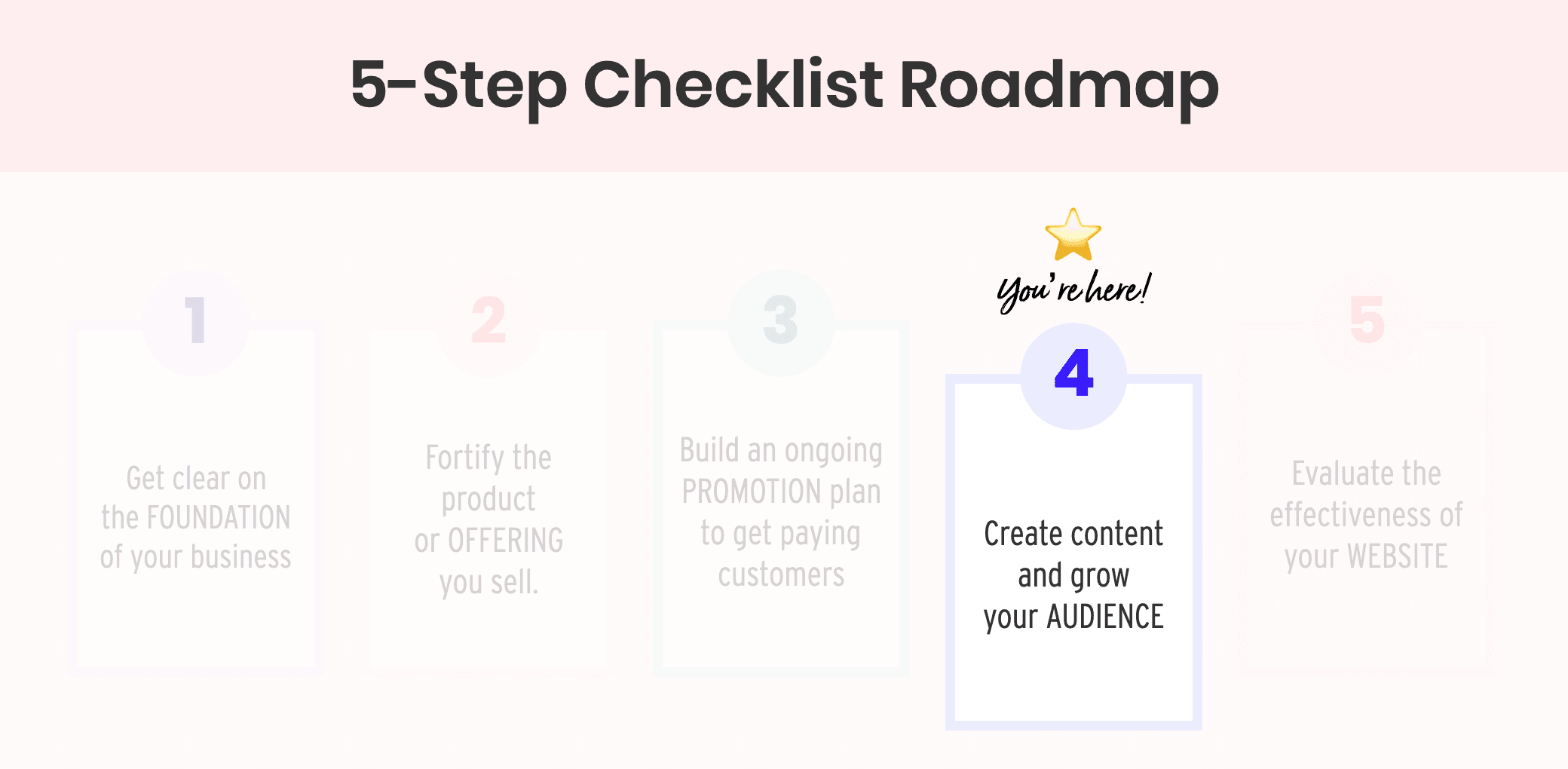
Step #4: Creating a Content Marketing Plan and Growing Your Audience
Slow, steady, and imperfect wins the audience growth race. Since 2014 we’ve used an incredibly simple content marketing plan that’s helped us build highly engaged audiences that purchase from us. That plan looks like this:
Email List Building/Marketing
Helpful Written Articles (like this one)
Some Social Media
Some YouTube
We 100% believe in the methodology of slow, steady, and imperfect wins the audience growth race.
You might be shocked to learn that our email list has hovered around the 10,000 subscriber mark for years and our website traffic barely tips 50,000 visitors per month. But that amount of email subscribers and website traffic is enough to have us bring in (the coveted) multiple 6-figures per year.
Our Content "Salad" Strategy
Because we love metaphors, we’re going to share our content marketing and audience growth strategy by talking about salads. Did we say, salads?? Yes, salads 🥗.
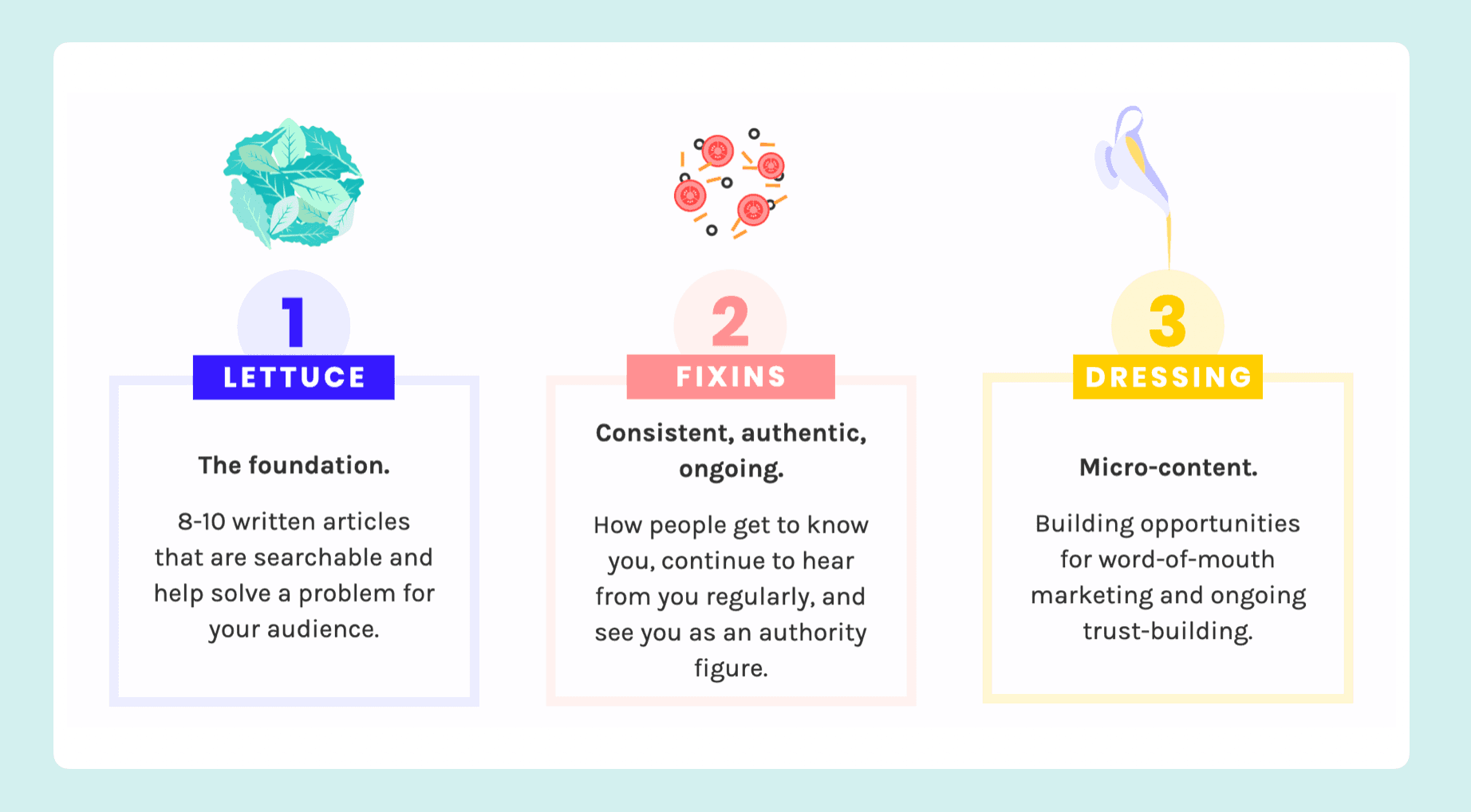
Part 1: Foundation Articles
Foundation articles are the base of your content strategy, the lettuce of your salad. These are 8-10 searchable and helpful articles on your website that are related to your product/service topic. These articles help you build organic (search) traffic, attracting your ideal customer based on the problems they’re trying to solve.
Purpose: Attract organic search traffic.
Action Step: Create 8-10 searchable articles related to your product/service.
Part 2: Consistent Content Creation
We call Part 2 the “fixins.” These are all the black olives, croutons, carrots, cucumbers, tomatoes, did we mention croutons yet?? Fixins are the ongoing serialized content you create to build trust and connection. They’re the pieces of content you publish consistently to build trust with your audience (or to attract new people!)
Email Newsletters: Most critical for audience building.
Podcasts and Videos: Supplement your content strategy.
Action Step: Decide on a content schedule and stick to it.
Part 3: Social Media as Dressing
A content strategy that starts with social media is like a building a salad by pouring dressing on the plate. You’d never put lettuce and fixins on TOP of dressing and try to eat it that way. You need the foundation of your salad first, THEN your fixins, THEN your dressing (social media) goes on top.
Strategy: Use social media to reinforce your brand and direct traffic to your content.
Action Step: Choose social media platforms that align with your audience and interests.
Every piece of content becomes part of your bigger plan to get people to find the product or service you sell
Remember who you are creating content for.
While it may be fun for you to sit down and write a blog post about the gluten-free bread recipe you discovered last week, does that serve your ideal customer and their needs?
We’re not saying don’t have hobbies and don’t create content around your life. But as it relates to your business, follow the plan we’ve laid out here FIRST and then layer in additional content.
Your audience will grow the longer you show up for them consistently.
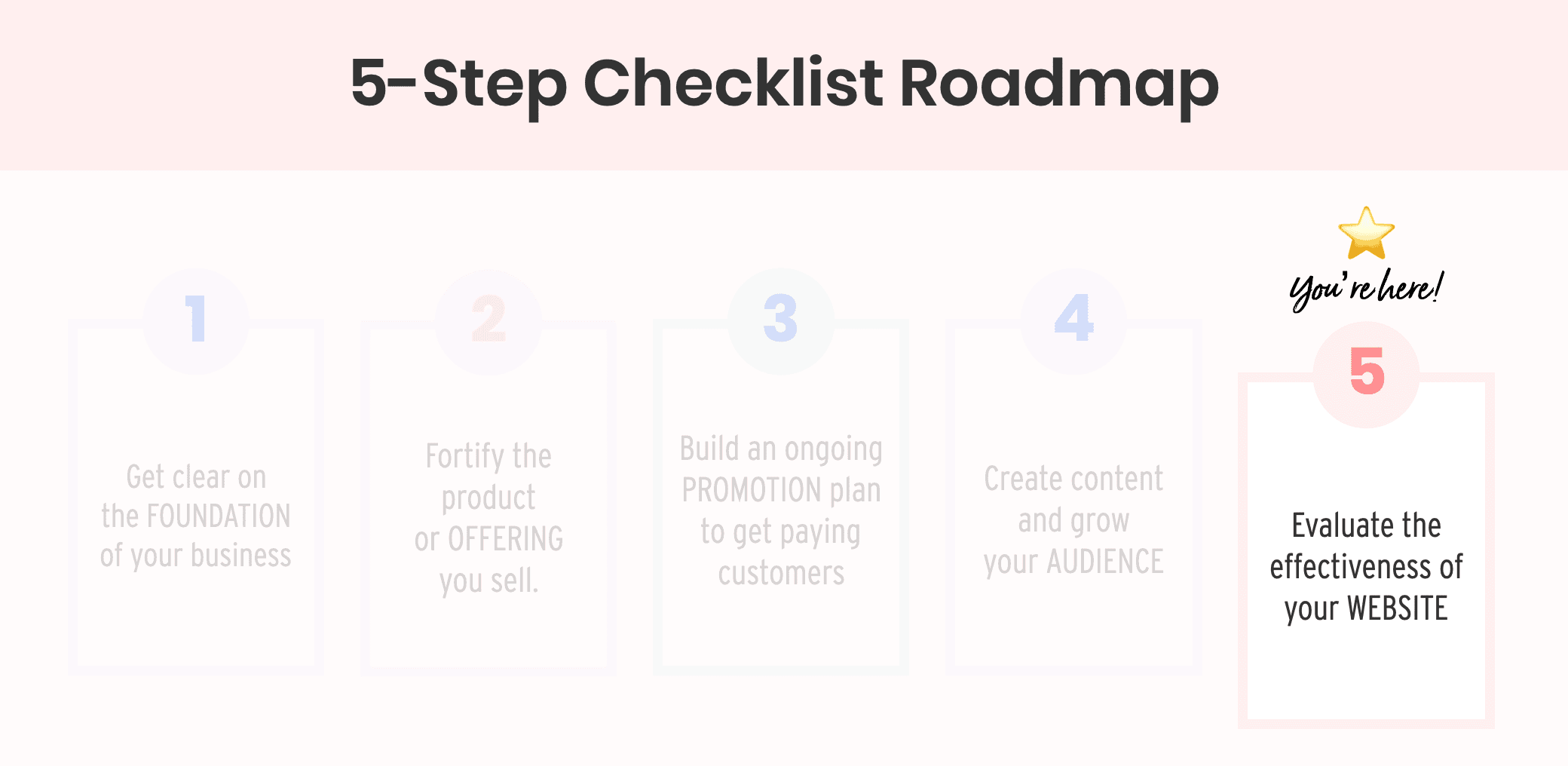
Step #5: Evaluate the Effectiveness of Your Website
You may be surprised that we haven’t talked about your website (with the exception of your services/sales page) up until Step #5. There’s a reason for that.
Most people START by creating their website but don’t have a solid foundation of the previous steps we’ve outlined to make their website actually work on their behalf. Your online business’ website exists to help you hit your business goals.
If it’s not helping you hit your goals, what’s the point in having it at all?
The Clarity Test
The big question you should be asking yourself is: How effective is my current home page at serving my business goals?
To answer this question, we’re going to bring our friend “4Qs” back around but adjust the questions slightly as it relates to evaluating the effectiveness of your current website’s homepage.
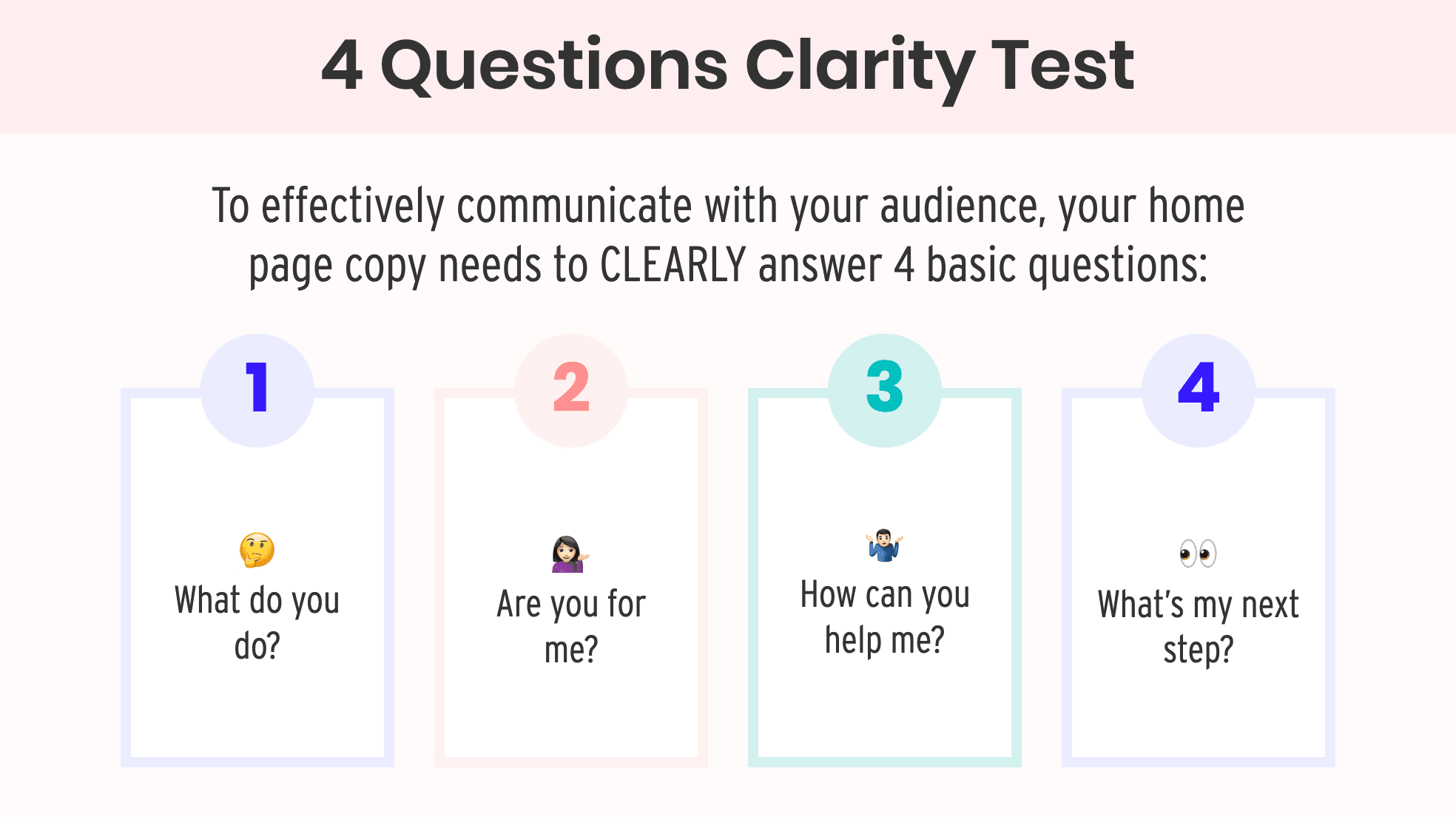
Key Questions for Your Home Page:
What do you do? – Clear description.
Are you for me? – Targeted audience message.
How can you help me? – Specific outcomes.
What is my next step? – Clear call-to-action.
Site Objectives Pyramid
Online business websites should follow a straightforward 3-objectives approach that involves primary, secondary, and tertiary objectives.
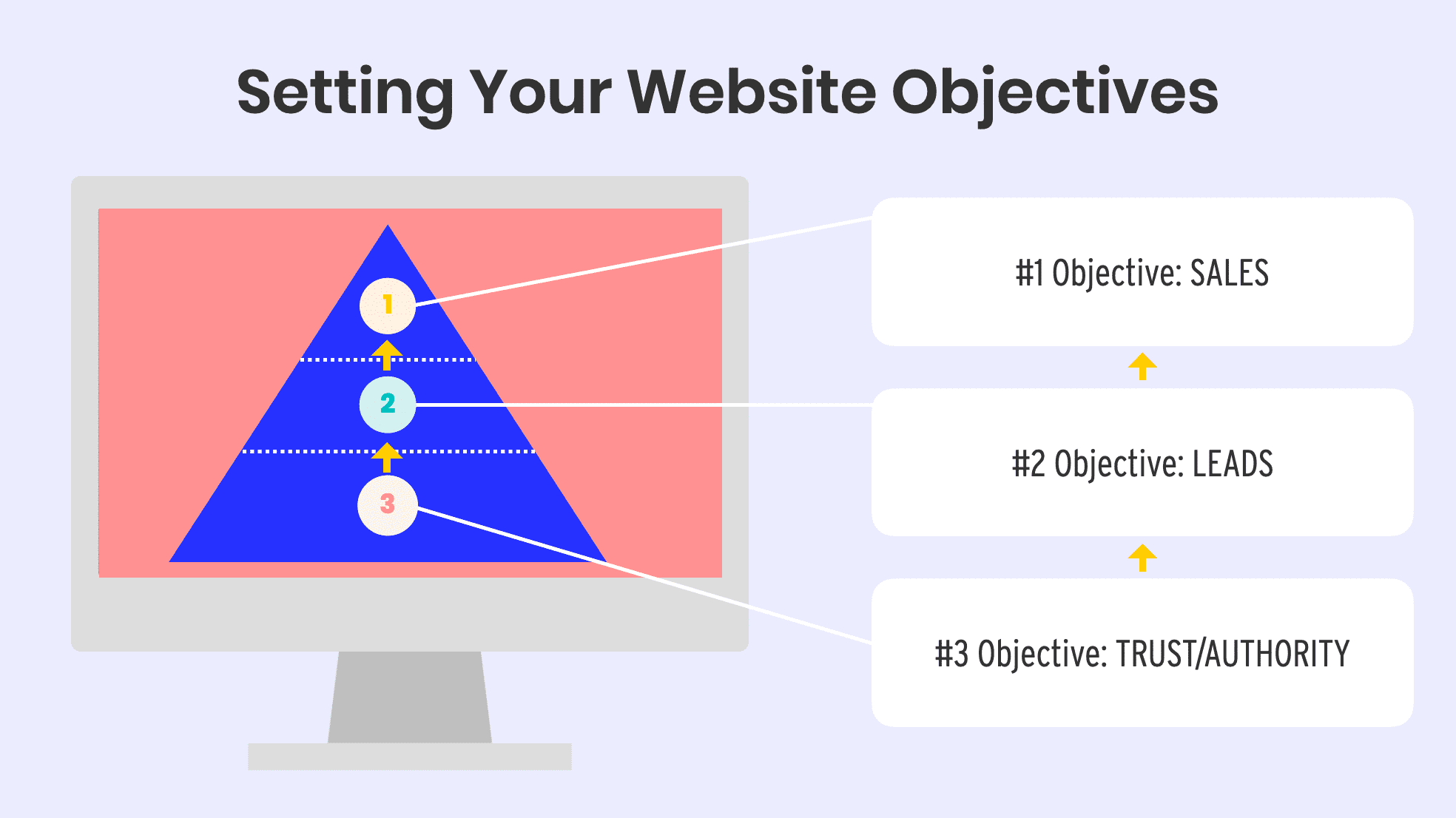
Primary Objective: Sales.
Secondary Objective: Leads.
Tertiary Objective: Trust/Authority.
Action Step: Ensure your website follows these objectives, focusing on leading visitors from trust to sales.
APSOSA Framework
If you are confused about exactly what you should put on your website’s home page, we have a simple framework for you! We call this the APSOSA Framework and it’s led by our wizarding friend, Webineezer!
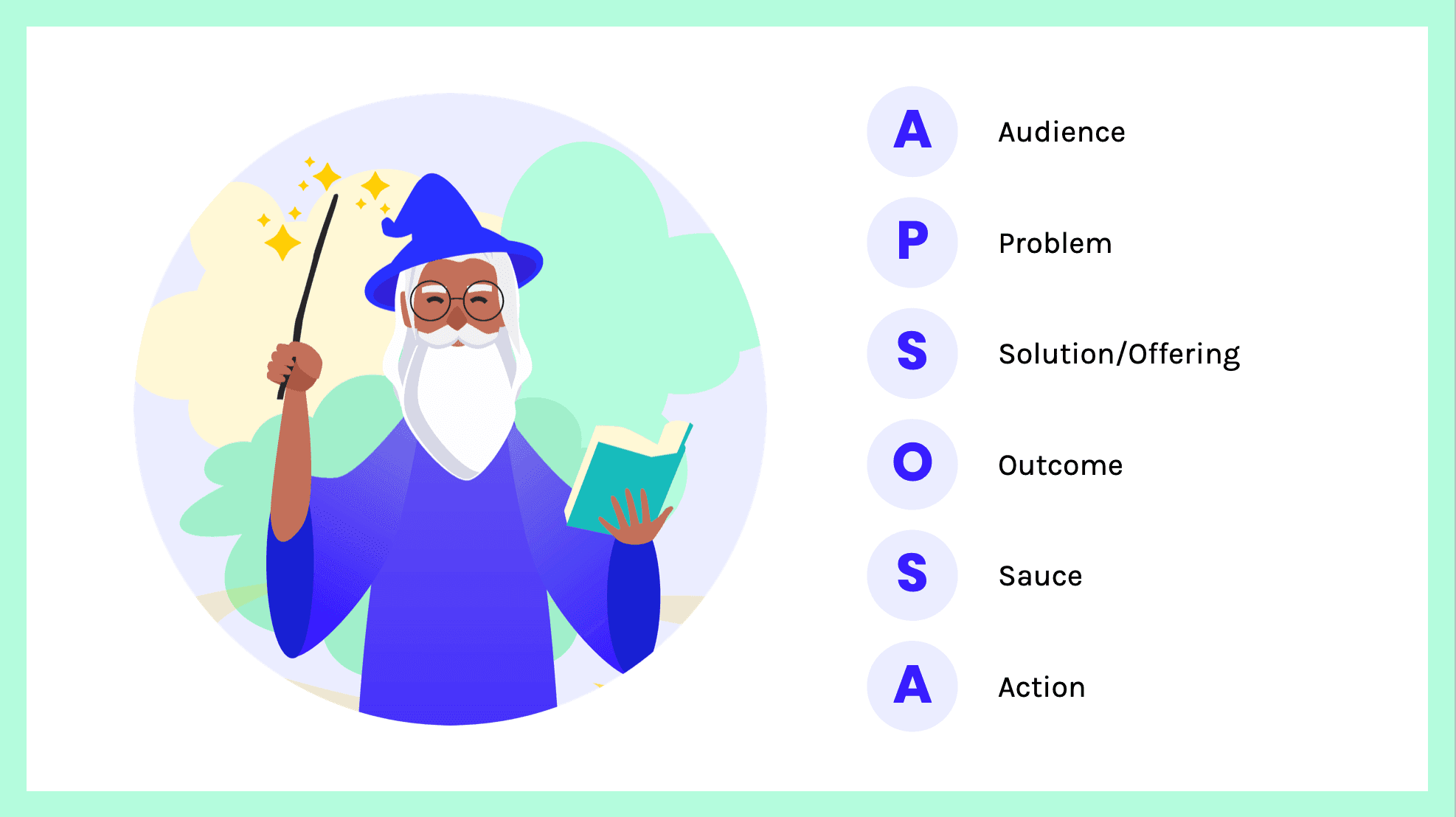
A: Audience – Identify your target audience.
P: Problem – Highlight the problem.
S: Solution/Offering – Position your solution.
O: Outcome – Describe the benefits.
S: Sauce – Add your unique touch.
A: Action – Clear call-to-action.
Action Step: Apply the APSOSA framework to your home page.
If your website’s home page only does those six things, you will hit your website objectives. In fact, we’d say your home page shouldn’t do much more than those six things because anything else probably belongs on other pages of your site (About Page, etc).
5-Step Business Checklist Conclusion
You made it through all five critical steps of fortifying your online business! We know this has given you a LOT to think about. But we also hope that by putting all of these crucial components together in one epic post, you have a central location that acts as a roadmap for how to improve every single aspect of your business.
We guarantee if you go through each of these important aspects and take the action steps we listed out for you, you WILL see an improvement in subscribers, and ultimately, customers.
We know it’s not the “silver bullet” that other entrepreneurs might promise you, but remember…you don’t want to buy expensive hot-trash. 😉
Focus on the foundation, take it one step at a time, and watch your business grow.
Join 12,000+ intentional business owners and get our Growing Steady newsletter every Monday where we share transparently about the latest projects we’re working on. You'll also get our Calm Creator Canva Whiteboard as a free download!













